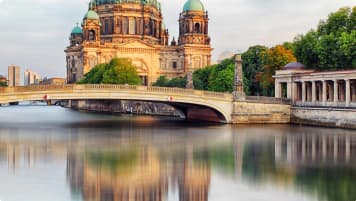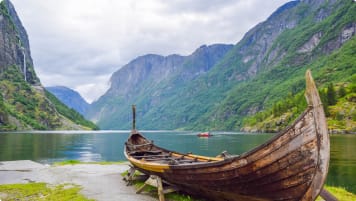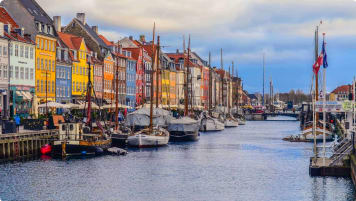Hanseatic League
An Article on the early trading of Germany and the Baltic states by an Antipodean travel company serving World Travellers since 1983 with small group educational tours for senior couples and mature solo travellers who are curious.
17 Nov 21 · 11 mins read
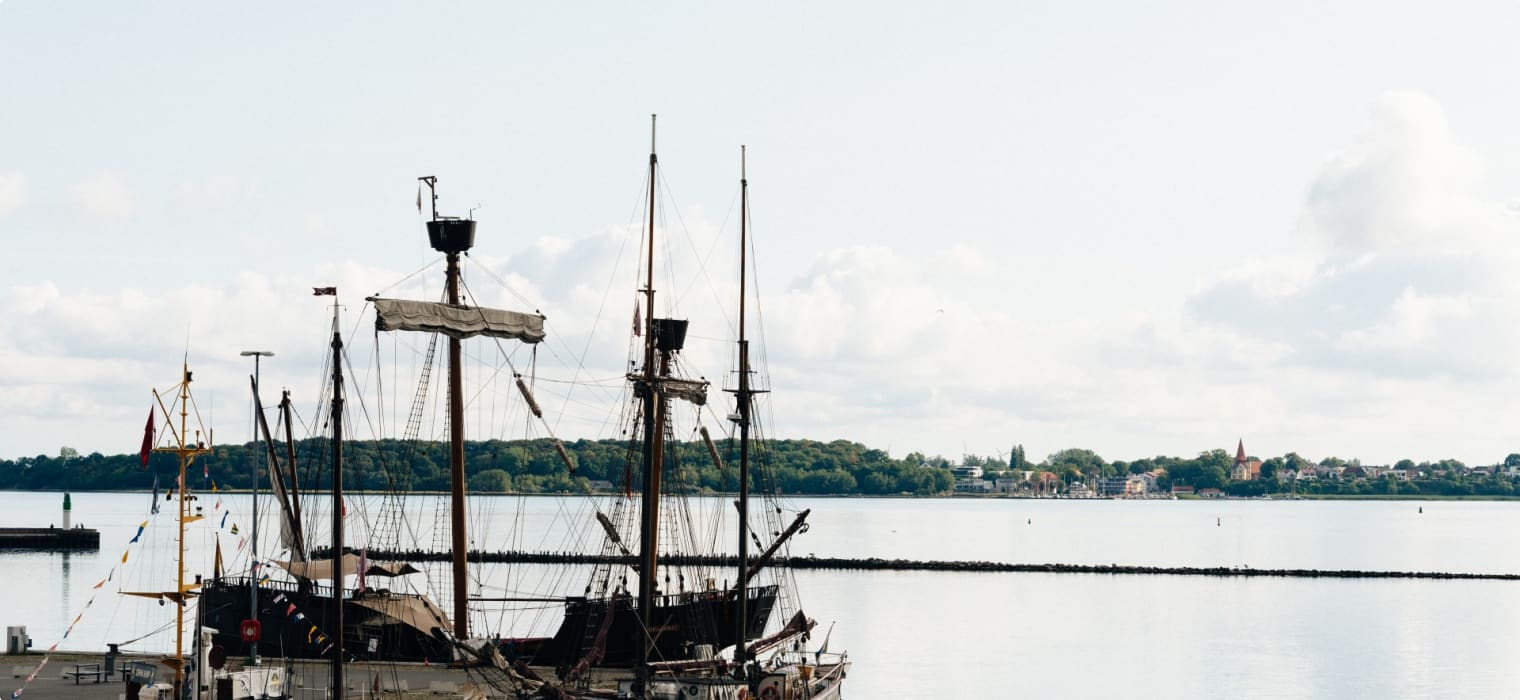
The Hanseatic League
By Marco Stojanovik
The Hanseatic League, or German Hansa, was a medieval trading confederation of merchant guilds and market towns along the shore of the Baltic and North Sea, and across great swathes of the north German hinterland. While Flemish, Swedish, and other non-German towns took place in the Hanseatic trade, the participating merchants all shared a common Germanic ancestry.
Originating from a loose association of German towns in the late 12th century to facilitate trade and protect mutual interests, over the next three hundred years the league grew to dominate commercial activity across Northern Europe. Ultimately, it would consist of nearly 200 member towns, with additional trading counters outside its network in places ranging from Novgorod, Bergen, Bruges, and London. This created an economic system that crossed political boundaries, linking together Germany, England, Flanders, Norway, Sweden, the future Baltic states, and even Russia.
Though this network flowed luxury goods such as furs from Russia, spices from the Levant (by way of Bruges), and amber from the Baltic. But its members were even more active carrying uncountable barrels of herring, vast supplies of wind-dried cod, and rye produced along the shores of the Baltic and lands of the Teutonic Knights. More than just a maritime trading network though, at the peak of its power in the 14th century, the league also operated as a major naval force. Members pooled their resources and armies for mutual defence and to defeat their hostile rivals.
However, by the late 15th century, their domination had started to dwindle, as rising merchant powers upended their monopolies and Hanseatic cities were absorbed into newly formed states. When the league was officially dissolved in the 19th century, it had long become irrelevant.
This article explores a detailed history of the Hanseatic League, intended as background reading for Odyssey Traveller’s tours in Germany, the Baltics, and Scandinavia. Much of the information used in this article is sourced from David Abulafia’s The Boundless Sea.
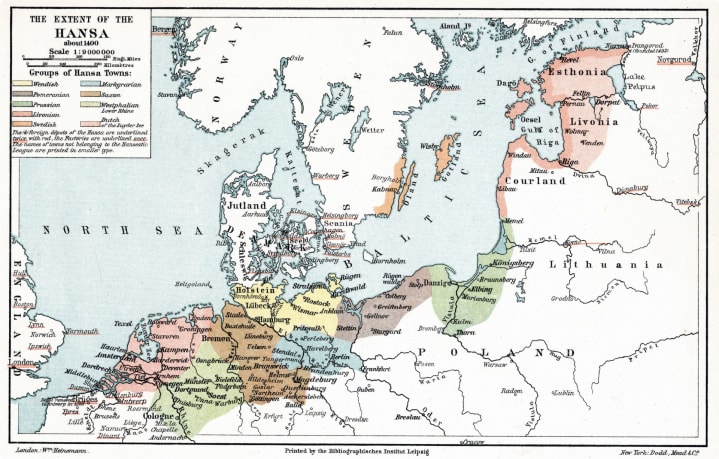
The Foundations of the German Hansa
Historians generally trace the origins of the Hanseatic League to the restoration of the city of Lübeck by Henry the Lion – the duke of Saxony and one of the greatest princes in Germany – in 1159. After Henry captured the area from Adolf II, count of Shauenburg and Holstein, he granted Lübeck the highest town rights, which were then confirmed by the German emperor, Frederick I Barbarossa.
This in turn established a city elite, a ruling council of 20 members, with power over law-making. With the council dominated by merchants, pragmatic trade interests would shape Lübeck’s politics, the city in time becoming the main base for Westphalian and Saxon merchants expanding northward and eastward.
For his new city to flourish, Henry mandated laws for the protection of foreign traders in the Baltic. The duke sent envoys into the northern towns and states, Denmark, Sweden, Norway, and Russia, offering them peace and free right of access through Lübeck.
Henry was particularly keen to attract merchants from Visby in Gotland, for he understood that extreme profits could be made. This would create a network linking Gotland, situated right in the middle of the southern Baltic, and Lübeck, with its access to the interior. From 1163, Henry allowed Gotlanders to come to Lübeck free of tolls, with reciprocal rights expected for Lübeckers visiting Gotland.
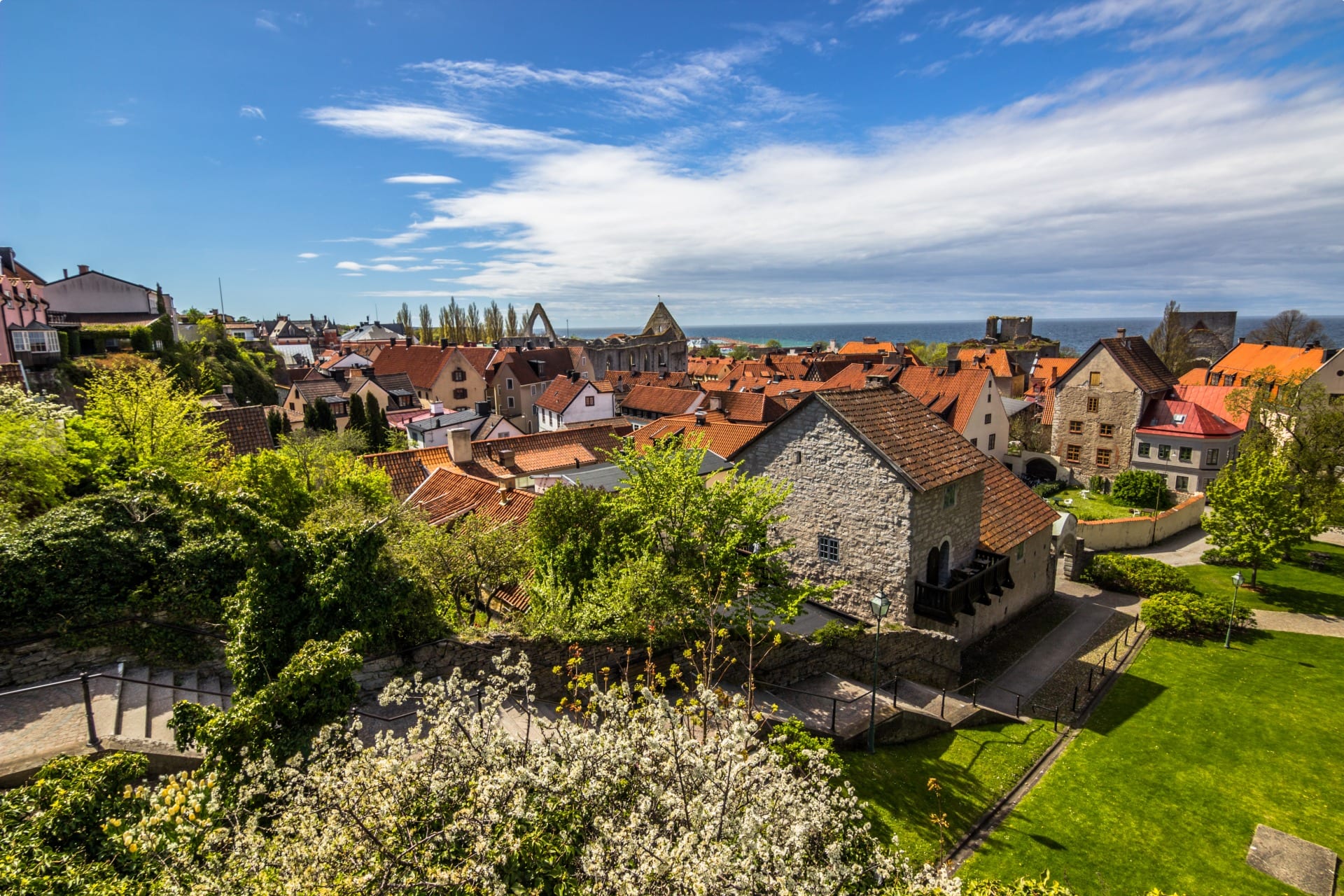
Due to its position, Visby actually exercised more influence that Lübeck in the early days of what was to become the German Hansa. Gotland was the great emporium where Russian goods such as furs (rabbit, squirrel, pine marten, fox, and at the top of the scale white ermine) and wax were received. The goods travelled part of the way by river, through Lake Ladoga and up the Neva into the Baltic, and then across what could be dangerous waters to Gotland itself. At the other end of the route, in Novgorod (the chief market for the Russia trade), Gotland possessed their own trading colony.
Henry the Lion and the Lübeckers were keen to tap into this Russian connection. At first, they rode on the backs of Gotland, with Prince Yaroslav III of Novgorod entering into a treaty with the Gotlanders and Lübeck in 1191 or 1192. Within twenty years, another prince of Novgorod, Konstantin, granted the Lübeck merchants the right to operate a trading post from their own courtyard, dedicated to St Peter.
With Lübeck growing more and more prominent, the town saw ever-increasing activity and its number of inhabitants rose considerably. In turn, Emperor Frederick II elevated the city to the special status of a free imperial city in 1226.
Like in other vital German and Flemish trading towns, the merchants in Lübeck had by this stage formed themselves into guilds, with the intention to link themselves through trade with other guilds and market towns overseas. In doing so the guilds would unite as a hansa, pooling their resources to ensure protection and increased profits.
Lübeck and the trading town of Hamburg formed one such alliance in 1241, signing a formal treaty of mutual protection. This gave Lübeck access to the North Sea and monopolized control over most of the salt-fish trade, which were harvested mostly in the Baltic and North Sea. The Foundations of the German Hansa had been laid.

The Hansa Expands
A number of other town’s guilds would join this new association between Lübeck and Hamburg in the years between 1241-1282. With formal agreements for confederation and co-operation, towns including Lüneberg, Wismar, Rostock, Stralsund, and Danzig, among others, formed the German Hansa. Although towns extended outside German heartlands, from Holland to Poland, it was the north German cities that remained the principal members. German colonists also settled in numerous cities on and near the Baltic Coast, such as Elbing (Elbląg), Thorn (Toruń), Reval (Tallinn), Riga, and Dorpat (Tartu).
The major impetus for the new cooperation was the failure of the German territorial government to provide security for trade. Towns drew close together so as to obtain mutual security, exclusive trading rights, and, where possible, trade monopolies. The principal city and linchpin remained Lübeck, with the towns adopting the “law of Lübeck” – common legislation for the defence of merchants and their goods.
Benefiting from their links to German cities, the early Hansa merchants could raise the capital they needed for ambitious ventures into Russia, carefully managed through legally binding contracts. This gave them an advantage over traditional Scandinavian traders, who operated with less sophisticated methods.
Once established in the Baltic Sea and Russia, the Hanseatic traders increasingly turned their attention to the North Sea, with Norway and England the focus of longer-range sailings. The cod fisheries of northern Norway and further out in the open Atlantic in particular would bring them prosperity. Norway would also become a good source of dairy goods exchanged for imported rye and wheat from Germany.
The German merchants had long identified Bergen as the obvious centre in which to concentrate much of their North Sea business, as it was the seat of the royal palace and an already flourishing centre of exchange. Here, they established the Kontor – a tightly controlled organization that negotiated for and managed the lives of the German merchants trading through Bergen. It was, in effect, a body of Lübeckers, operating under the commercial law of Lübeck, though there were also members from Hamburg, Bremen and elsewhere.
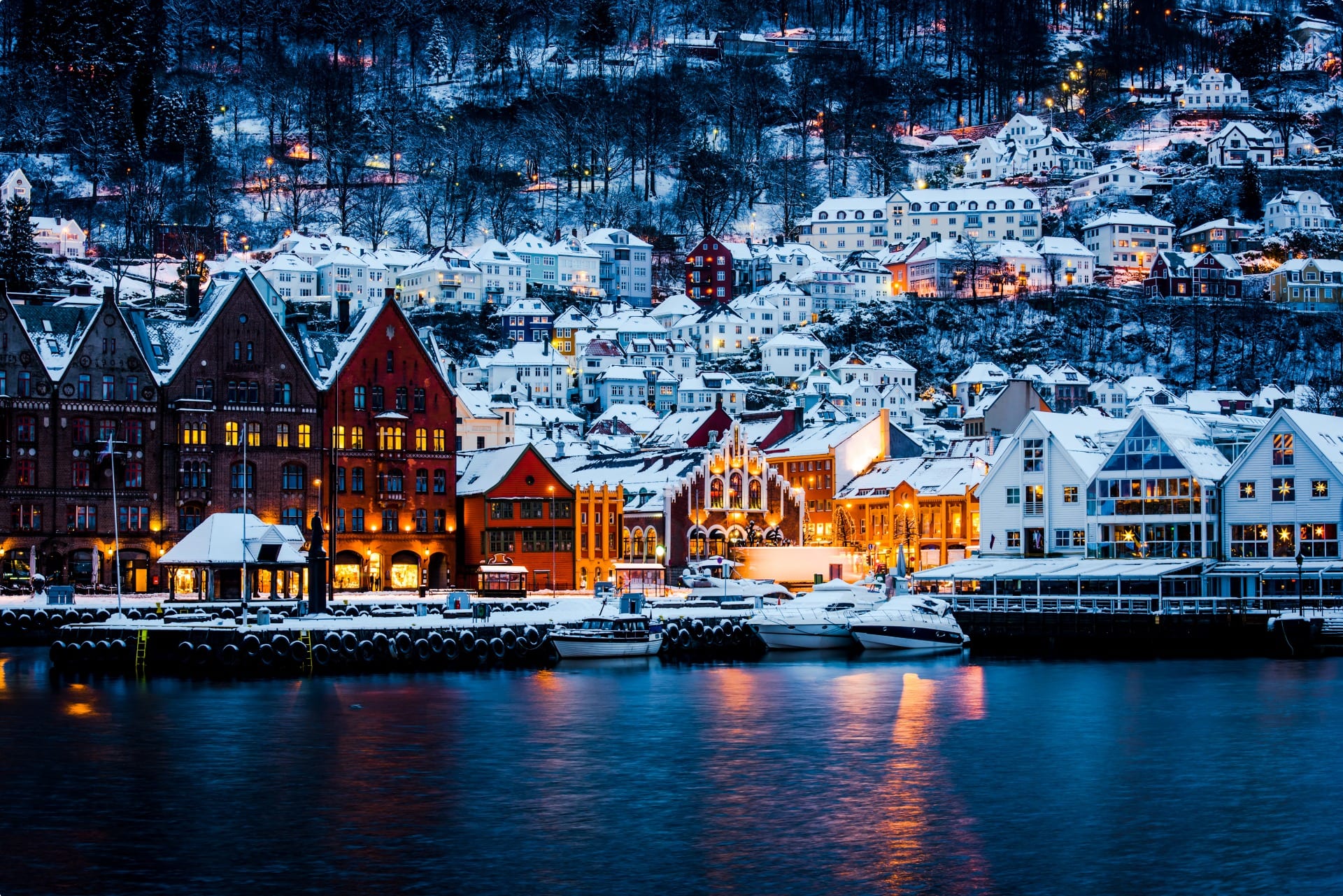
England’s market was also highly desirable, with the country producing an excellent supply of wool, which it traded with the Germans in return for Rhineland wines and high-quality silver. In London, King Henry III of England, who was related by marriage to the German emperor, took the Lübeckers under his protection and granted them special privileges in 1266. When the Cologne Hansa joined them in 1282, the most powerful Hanseatic colony in London was formed.
They soon established a Kontor here too by the River Thams. Over time, it grew into a significant walled community with its own warehouses, church, offices, and houses, reflecting the importance and scale of trading activity on the premise.
A significant Hansa community also operated at Bruges in Flanders, which was at the time the major financial centre in northern Europe. As a cosmopolitan centre, the city attracted businessmen from all over western Europe, notably Genoa and Florence, as well as from the Baltic. The German merchants operated rather differently here though than in Novgorod, London, and Bergen; rather than possessing a reserved space and being closely concentrated together, they were dispersed across the city.
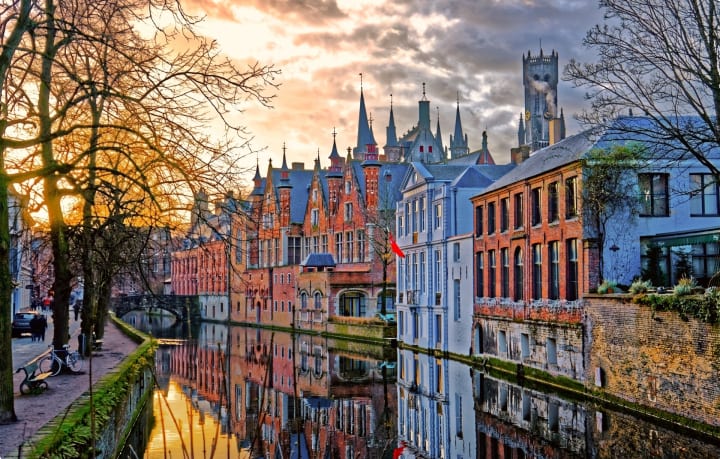
Meanwhile, the German merchants had consolidated their control of the Baltic region, capturing Gotland in 1293. This reduced Visby to subservience and fused the two great Hanses operating in Gotland into one great union largely dominated by Lübeck, thereby establishing a monopoly on trade in the region
Thus, by the close of the 13th century the German Hansa had been formed, extending across northern Europe. It consisted of towns and cities both inside and outside the German heartlands, as well as Kontors in cities ranging from Novgorod, to Bergen, London, Bruges, and local depots in many more.
The Official Hanseatic League
The Black Death, striking northern Europe from 1347 to 1351, followed by further periodic waves of bubonic and pneumonic plague, signalled the beginning of a great economic transformation. The heavy loss of human life reduced pressure on supplies of basic foodstuffs, but it also significantly disrupted the production and distribution of food. Land went out of cultivation as villages lost their manpower and became unviable; and a large migration to the towns took place, where artisans were in short supply.
Food shortages thus resulted, leading to high demand for the movement of large quantities of food. In this context, transport by sea became of crucial importance, since it rendered possible the movement of really substantial quantities of grain, dried fish, dairy goods, wine, beer and other necessities or desirables. For the Hansa merchants, as for merchants in many other parts of the Atlantic and Mediterranean, this was a time when it was possible to reap handsome profits.
Accordingly, within a few years of the Black Death, the Hansa merchants began to organize themselves more tightly, holding regular Diets. With the first Diet held at Lübeck in 1356, the Hanseatic League was officially founded, with a shift from the ‘Hanse of the Merchants’ to the ‘Hanse of the Towns’.

Solidarity between cities was seen as the best way to approach the new economic conditions, as well as the unsatisfied demands for insurance, and the breakdowns of relations with the counts of Flanders and with the city of Bruges. The league also provided much-needed protection in the face of growing threats of pirate attacks and hostile political rivals. By agreeing to adopt the law of Lübeck, members swore to place their own armies at each other’s disposal for mutual defence and aid.
From 1356 onwards, the Hanseatic towns met irregularly in Lubeck for Diets, with 72 held by 1480. Even so, the Handa did not become a state-like body but remained a loose-super league. Allied cities came together from regions as diverse as the Rhineland, where Cologne dominated, the southern or ‘Wendish’ Baltic, which was Lübeck’s informal empire, and the newer cities of the eastern Baltic, of which Riga was the most important.
Over the League’s existence, the alliance consisted of a flexible roster of 70 to 170 cities at any given time. In total, there are about 200 cities every regarded as a Hansa town. Throughout, Lübeck remained the lead city, with its size, wealth, and location gifting it formidable advantages. With the other powerful cities, it determined the polices of the league. Most members were far too small to exercise any political influence at all, seeking rather to gain tax advantages and trading opportunities.
Extent of Trade
Membership was attractive in that the league ultimately controlled the main currents of northern trade. This involved trading timber, furs, resin (or tar), flax, honey, wheat, and rye from modern-day Russia and the “colonial” lands of Eastern Europe westwards to Flanders and England, with cloth and manufactured goods going in the other direction.
Scandinavia was also involved in the Hanseatic operations. The Norwegian production of whale oil and cod was monopolized, while metal ore (principally copper and iron) and herring were traded southwards from Sweden throughout Germany and southwards to the Alps.
In time, the search for cheap salt to preserve the herrings extended the Hanseatic world even further south, first to western France and then Portugal by the 15th century. The Hanseatic merchants brought all sorts of other foods to Portugal. Including grain, beer, and beetroots.
Military Might
At the height of their power in the late 14th century, the Hanseatic League succeeded in mustering economic, political, and military strength to defend their monopolized markets against growing competition. Increasingly, they used large gifts and loans to influence imperial policies, securing their privileges while stifling opposition. If such means were inadequate, threatening to withdraw trade and enact economic embargos and blockades would break most forms of resistance.
In extreme cases the league resorted to organised warfare. A famous example of such is the nine-year war with Denmark between 1361 and 1370, provoked by the expansionist policies of the Danish king Valdemar IV of Atterdag. The forces of the league were ultimately victorious, inflicting a crushing defeat on the Danes in 1368, forcing the kingdom to submit to the peace of Stralsund in 1370.
This favourable treaty marked the height of Hanseatic power, effectively gaining a trade and economic monopoly in Scandinavia. By its terms, they won the towns that controlled traffic through the narrow passage of the Øresund, 15% of profits from Danish Trade, and the right to determine the succession to the Danish throne for the next 15 years.
Through military might, they then maintained their Baltic hegemony in the ensuing decades. They were effectively able to resist not only the Danes in subsequent conflicts, but also predatory pirates known as the Vitalienbrüder. Not until their defeat in the Dutch-Hanseatic War (1438-1441) was their monopoly broken.
Decline of the Hansa
From the late 15th century, the Hanseatic League’s power began to wane, as neighbouring competitors slowly took over. Initially in Russia, in 1478, the Hanseatic merchants were expelled from Novgorod after the city was captured by the grand prince of Moscow, Ivan III; and then in 1494 Saint Peter’s court at Novgorod formally ceased to be a Hanseatic Kontor.
The growing mercantile and industrial strength of England the Netherlands then encroached on their trade in the North Sea and even in Germany and the Baltic. The Dutch were able to break into the Baltic on the back of growing textile and brewing industries, and a herring industry that eclipsed that of the Hanseatic league’s in Skåne. By the middle of the 16th century, they had become the major carriers of Baltic produce to the west, and by the first decade of the 17th century their ships were completing dominating the Baltic trade.
Queen Elizabeth I, meanwhile, expelled the Hansa merchants from their London Kontor in 1597 (albeit temporarily), fearing a threat from the league to England’s emerging maritime prowess. The Kontor was to never regain its significance, and when later destroyed in the Great Fire of London in 1666, it failed to raise financial assistance from the league to be reconstructed.
By this stage, the political authority of the German princes had also started to grow, curtailing the freedom of the merchants, and forcing the detachment of many Hanseatic towns from the League. The emergence of centralised foreign states following the Thirty Years’ War in the mid-17th century had a similar effect, with the growing powers asserting themselves over the Hanseatic towns.
Thus, by the late 17th century, the league’s membership had dwindled and effective cooperation between those left had become increasingly rare. Its last Diet was held in in the preeminent city Lübeck in 1669, its power by then diminished to be almost irrelevant.
Only Lübeck, Hamburg and Bremen remained when the league was dissolved with the creation of the German Empire under Kaiser Wilhelm I in 1862. Still, these cities refer to themselves as Hansa-towns in common day German today.
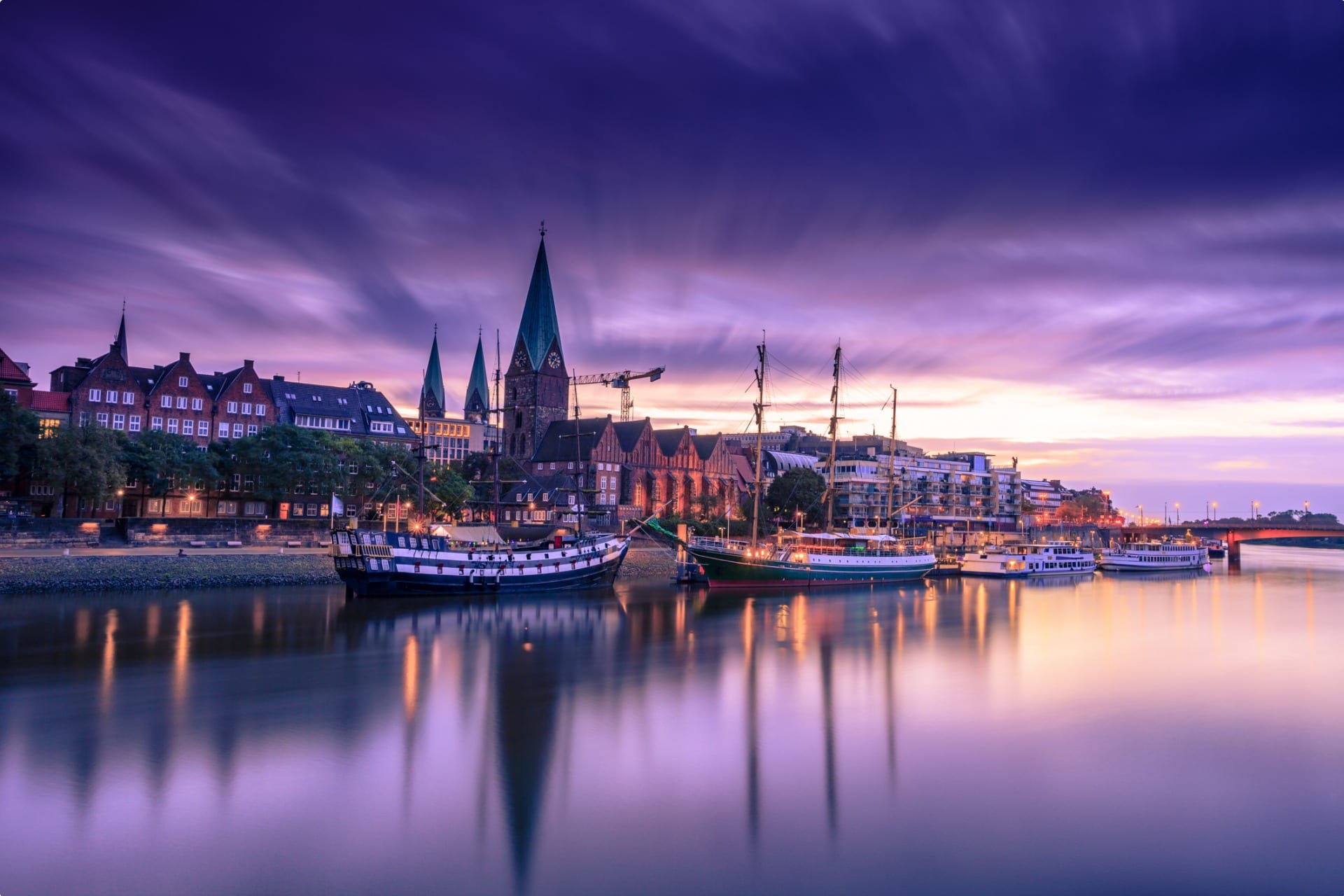
Tour the Towns of the Hanseatic League
Odyssey Traveller visits the former towns of the Hanseatic League during several tours, including our:
- Baltics Small Group Escorted Tour
- Contemporary Germany Small Group Tour
- Scandinavia Tour
- Western Europe Small Group Art Tour
Or you can click here to explore all our destinations in Europe.
Odyssey Traveller has been serving global travellers since 1983 with educational tours of the history, culture, and architecture of our destinations designed for mature and senior travellers. We specialise in offering small group tours partnering with a local tour guide at each destination to provide a relaxed and comfortable pace and atmosphere that sets us apart from larger tour groups. Tours consist of small groups of between 6 and 12 people and are cost inclusive of all entrances, tipping and majority of meals. For more information, click here, and head to this page to make a booking.
Articles about Northern Europe published by Odyssey Traveller:
- Discovering Scandinavia & Viking Denmark for Tourists
- Baltic States Guide for mature & senior travellers
- History of Berlin Germany for tourists
- Questions About Denmark for senior travellers
- Leipzig, Germany
For all the articles Odyssey Traveller has published for mature aged and senior travellers, click through on this link.
External articles to assist you on your visit to Northern Europe:
Related Tours
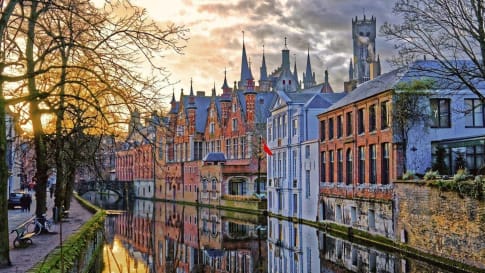
21 days
SepBelgium, Netherlands, France, Germany Art Tour | Western Europe Art Tour
Visiting Belgium, France
Most of us have already experienced the grandeur of classic galleries such as the Louvre and the National Gallery. Travel with like-minded people in a small group tour and be surprised by the lesser-known but equally wonderful smaller art galleries across Northwest Europe.
From A$15,895 AUD
View Tour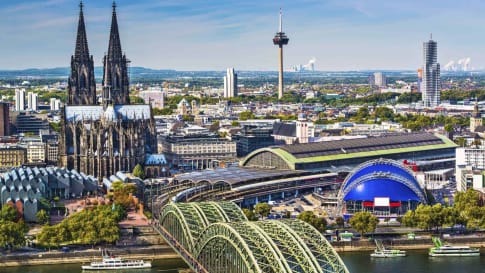
22 days
Aug, AprContemporary Germany small group tour
Visiting Germany
Join us on this this comprehensive small group journey in Germany that begins in Heidelberg and ventures south to the romantic Black Forest to Munich. Spend 21 nights in Germany, featuring Berlin, Munich, the Black Forest, Bavaria, the Alps, and the Rhine.
From A$17,295 AUD
View Tour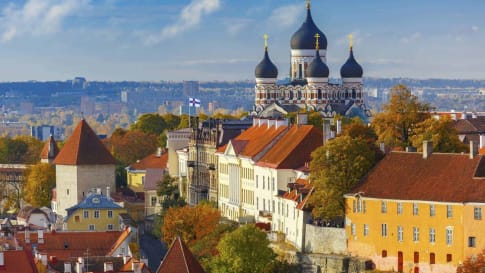
21 days
Sep, MayBaltics Small Group Escorted Tour: Latvia, Estonia, Lithuania
Visiting Estonia, Finland
An escorted small group tour to the Baltic States of Europe that explores the key destinations of this region starting in Berlin, then making its way through Poland, Estonia, Latvia, Lithuania, Finland and concluding in St. Petersburg. Each day has scheduled itineraries supported by local guides who share knowledge and authentic experiences of the places visited. This is small group travelling to the Baltics for like minded people.
From A$13,995 AUD
View Tour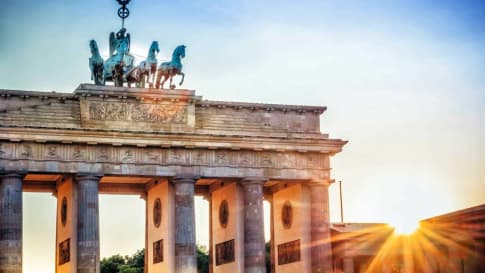
12 days
Oct, MayBerlin walking tour
Visiting Germany
Enjoy an escorted walking tour of Berlin. This small group holiday is for like minded people, mature couples or solo travelers who enjoy getting off the beaten track and exploring with some adventure. The itineraries set for each day follow sections of the Berlin Wall, whilst local guides realise authentic experiences found in this amazing city.
From A$8,745 AUD
View Tour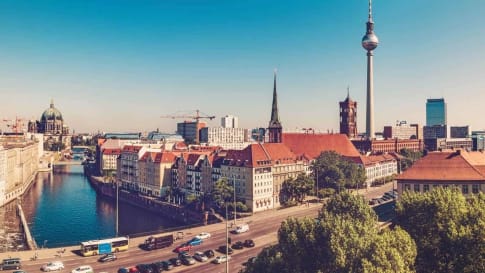
20 days
Apr, SepDiscovering Berlin Small Group Tour | 20 days living in Berlin
Visiting Germany
Experience Berlin while living there for almost three weeks in an apartment. From one of the best small group tour companies for Europe enjoy an escorted tour learning about the city's history and experiencing it like a Berliner. This holiday is for like minded people, mature couples or solo travelers who enjoy getting off the beaten track and exploring with some adventure.
From A$12,795 AUD
View Tour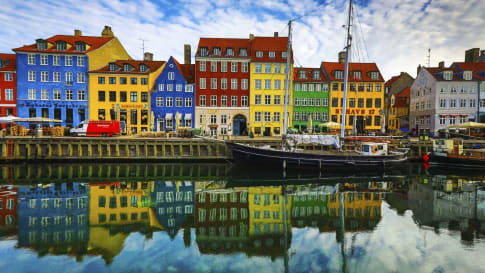
13 days
Jun, SepScandinavia tours for mature travellers
Visiting Denmark, Norway
Uncover on a small group tour for couples and solo travellers, a Viking past and view of the world’s biggest fjords on this journey through Scandinavia. In low-lying Denmark our small group journey takes us to visit the Zeeland, the sea land, and our program includes the vibrant capital of Copenhagen. In Norway we travel through endless forests, skirting great fjords to Bergen.
From A$14,995 AUD
View Tour
21 days
SepScandinavian Design Small Group Tour: Denmark, Sweden and Finland
Visiting Denmark, Finland
Denmark, Sweden and Finland realised that the only way to remain competitive on the world stage was through the value of superior design. Travelling with like-minded people on our small group tour you will explore the cities and towns where those high quality products, appreciated around the world, are created including hygge.
From A$16,685 AUD
View Tour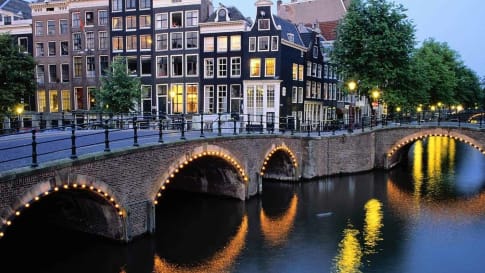
days
AprAmsterdam City Tour
Visiting The Netherlands
Short escorted tour of Amsterdam exploring the city for 5 days as a small group. Your tour guide provides an authentic experience with expert local guides, exploring one of Europe's most popular destinations with like minded people. Designed as a short tour for those who wish to spend additional time in places at the conclusion of their tour.
Collection of articles of interest
Related Articles
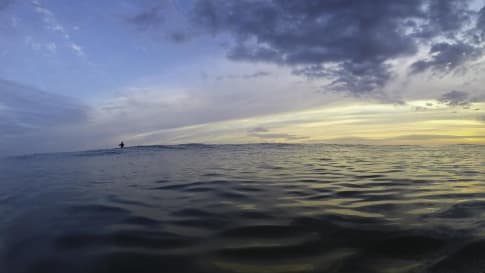
Atlantic Ocean and How it Shaped Ancient Communities In Europe
Article of interest for senior couples and mature solo travellers joining a small group European tour to Faroe Islands, Scottish Isles, Morocco or Portugal. Focus is on the early exploration of the Atlantic.

Discovering Medieval Chester: A Thriving Trade Centre
Article about Chester, England for small group educational tours for senior couple and mature solo travellers to England. Articles to support your travel plans to explore England, Scotland, Wales and Ireland.
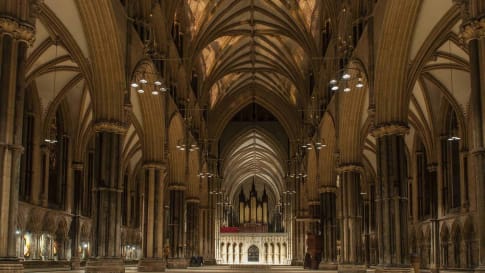
Traveller's Guide to Medieval England
A travellers guide beyond the landscapes of Medieval England supporting Britain's history from the Roman's to Queen Victoria and the industrial revolution.

Medieval British Village Life: The Definitive Guide for Seniors
Life in the Medieval British Village In a previous article, we looked at the icons of the British village–the pub and the cottage–and looked at their history and evolution from Roman and Norman times. In…
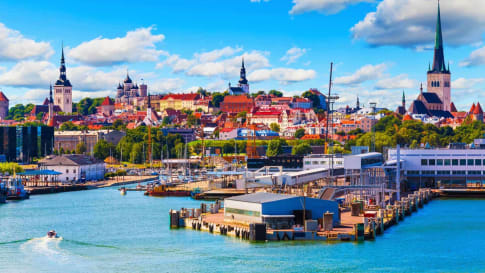
Baltic State History: The Definitive guide for Senior Travellers
History of the Baltic States The term “Baltic states”–used to describe the countries of Estonia, Latvia, and Lithuania–is a geopolitical term, a shorthand to group together these three Northern European sovereign states. But though the…

Sami People of the Arctic
The Sámi people are the only indigenous people of the European Union and are one of the oldest living cultures of our planet. Article for senior couples and mature single travellers curious about the Samii people and Viking culture that stretches across the Faroe Islands, Norway, Sweden and Finland on a small group educational tour.
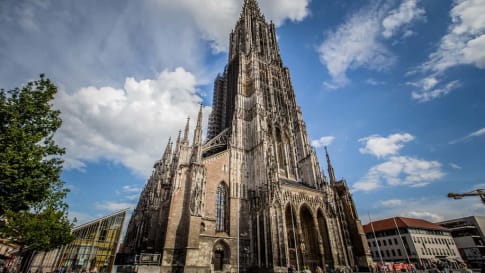
Gothic Germany
The term Gothic is often used to refer to a turning point and new era of European architecture that is generally seen as starting in the mid 12th century. Gothic architecture was in stunning contrast to Romanesque architecture which emphasised few windows, massive stonework and heavy walls. In comparison, the Gothic style featured stained glass windows, flying buttresses and more light-filled interiors that made use of cavernous spaces.
